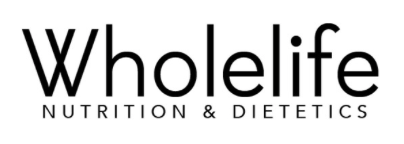WHAT TO DO IF YOU HAVE LACTOSE INTOLERANCE
For some it's a love-hate relationship with dairy, you love the cheese and wine, but maybe your gut doesn't. It is commonly one of the first foods cut out when we get an upset tummy. So, if you’re going to do it, you’re going to need all the info to do it properly & safely!
I have your back, here’s everything you need to know if dairy foods are causing you trouble!
Lactose intolerance is when the body's is unable to digest lactose, the sugar found in milk and some dairy foods. This is due to our bodies not producing enough of the enzyme, lactASE. Take a seat, we are about to going into a mini biochemistry lesson, here are two important and confusing words to wrap your head around:
LactOSE - the simple sugar found in dairy, a disaccharide (di-meaning 2, saccharide-meaning carbohydrate), you got it, 2 sugar/carbohydrate molecules (made up of 1 glucose and 1 galactose) stuck together. Also, referred to as the 'D' in FODMAPs. Lactose intolerance is a separate condition to IBS, but in my clinical experience, symptoms definitely overlap. Before our bodies can absorb it, lactOSE needs to be split into 2, this is where lactASE (tip: digestive enzymes all have the suffix -ase) comes into the story.
LactASE - Our small intestines are lined with villi and microvilli, these look like small hairs coming out from the cell wall. These little hairs contain the lactase digestive enzyme, which splits lactose into glucose and galactose so our body can absorb it in our small intestine for energy and therefore doesn’t move through to our large intestine to cause tummy troubles.
People with lactose intolerance don't produce enough lactase (sometimes called lactase deficient) to breakdown lactose, which can cause bloating, stomach cramps, diarrhoea.
Fermented dairy such as kefir & yoghurt can improve lactose digestion & intolerance by around 54-71%, compared with traditional dairy milk. This is because fermented dairy products naturally contain lactase which helps to breakdown lactose. Alternatively, some products may have lactase added which give our gut a little help with digestion.
Low lactose, not dairy-free
Food allergies or Coeliac Disease require strict removal and adherence of the allergen and relate to the protein, not the sugar as in FODMAPs or lactose intolerance. Food intolerances mean small amounts may be a-okay! It's important to work with your digestive dietitian to work out your intolerance level. And more good news, not all dairy products contain lactose (sigh…*pass the cheese board!*)-see table below to see what dairy foods have low or no lactose!
What symptoms may I have?
Abdominal pain
Abdominal swelling
Bloating
Flatulence
Diarrhoea
These symptoms may occur immediately or a few hours later. You may have one or all of these symptoms, but don't worry, once you remove lactose or find your tolerance level, symptoms will go away and you can happily live symptom free!
How do I know if I’m lactose intolerant?
Your doctor can order a lactose hydrogen breath test. It measures lactose malabsorption by measuring the amount of hydrogen (or methane) in your breath after a dose of lactose. Make sure your test is performed and interpreted with caution by your doctor, so you don't remove any foods from your diet unnecessarily.
NOTE: This test is used to diagnose lactose intolerance, not IBS. That is a diagnosed using the Rome Criteria IV (click here to read more about this).
Working together with a digestive dietitian to do a thorough dietary assessment will also help to identify food intolerances, including lactose and avoid any potential nutrition deficiencies.
What causes lactase deficiency?
Genetics is the most common cause as some people lose the ability to make the lactase enzyme, this occurs in 15% of Caucasian adults and up to 90% in African American and Asian populations.
Any disease or damage to the small intestine such as Coeliac disease, Crohns disease or following the dreaded gastro. However, once the gut lining has healed (could be weeks or months), your good to go & should be fine with lactose again.
I’m not lactose intolerant, but I’m doing the low FODMAP diet, can I eat lactose?
If you have IBS and have had a negative lactose hydrogen breath test, you may not need to eliminate lactose as part of the low FODMAP diet, to you it will be the low FOMAP diet. Discuss this with your digestive dietitian.
How much lactose, I mean cheese, can I eat before I get symptoms?
This will vary from person to person. Most people can tolerate 4g of lactose in one sitting (approx 50g of milk, 1 scoop of low fat ice-cream) and up to 12g spread throughout the day. Some cheeses contain low levels of lactose, so no need to hold the cheese and wine!
Butter and Margarine (~0.1g per tablespoon) are very low in lactose and suitable on lactose free diet.
What do I need to be careful about if I’m removing dairy?
Dairy foods are great sources of calcium. It is important for strong bones, teeth and muscle contractions. Not getting enough calcium can increase your risk of osteoporosis (brittle bones).
And remember, your lactose intolerant might not be forever, and your tolerance level might be different to the next person, find what is right for you!
You can read more about lactose breath tests here
If you think you’re lactose intolerant, see your doctor before eliminating lactose-containing foods and see a digestive dietitian to ensure your diet is nutritionally adequate and to gain a better understanding of the condition. As always, I am here to answer your questions or can point you in the direction to your closest digestive dietitian.
If you know someone who is or thinks they may be lactose intolerant, feel free to share this with them,
Kindest,
Sarah



